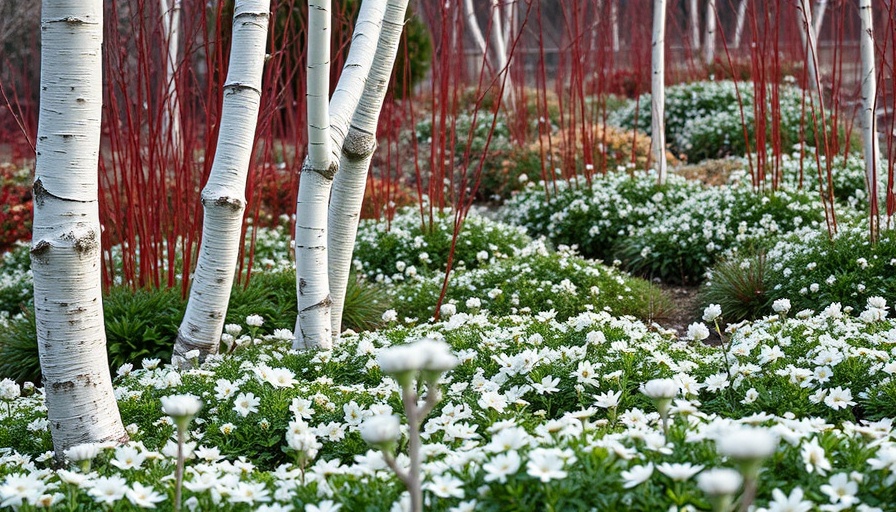
Discover a Winter Wonderland: Vibrant Colors and Scents Await
Winter might traditionally be seen as a dull time for gardens, but recent innovations are challenging that notion. An inspiring visit to Kew Gardens' new Winter Garden reveals how thoughtful plant selections can create stunning displays in what many would consider a desolate season. The Winter Garden, though compact, showcases a brilliant use of color and scent, proving that winter gardens can be just as captivating as those in spring or summer.
The Power of Plant Selection
The Kew Winter Garden exemplifies how carefully curated plant combinations can ensure continuous visual interest throughout winter. With a focus on architecturally striking deciduous trees, light and structure are created without relying solely on evergreens. Specimen trees such as the Tibetan Cherry (Prunus Serrula ‘Tibetica’) shine with their peeling bark, offering vibrant color even in the depths of winter.
Innovative Garden Design Strategies
A significant aspect of the Winter Garden design is its clever use of space, particularly on a slope. By incorporating a curved path that winds through the planting, visitors experience an immersive journey that highlights the textures and fragrances of a diverse plant selection. This technique not only maximizes visual appeal but also enhances accessibility and engagement, setting a precedent for garden designers looking to make the most of their landscapes.
Winter Color Beyond Green
While many assume that winter gardens must contain a plethora of evergreen plants to be effective, Kew Gardens reveals otherwise. The lushest colors come from deciduous shrubs and trees, such as the vibrant red stems of Cornus (dogwood) and the striking bark of Himalayan birch. These plants provide not just color but dramatic structure during the winter months. Selecting trees and shrubs for their bark color and form allows for a rich tapestry of visual interest.
Winter-Flowering Champions
The joy of winter gardening extends beyond foliage into blooms. Kew's adept use of winter-flowering bulbs adds delightful surprises. Snowdrops, hellebores, and winter aconites emerge as early harbingers of spring, captivating all who pass. This strategic planting ensures that even in the cold, your garden can burst forth with life, encouraging pollinators to visit early.
Creating an Olfactory Delight
Not to be overlooked, the scents of winter plants play a vital role in transforming a bleak landscape into a sensory experience. Key players like Paperbush (Edgeworthia chrysantha) and Christmas box (Sarcococca confusa) deliver delightful fragrances that awaken the senses during a typically quiet time of year. When planning your winter garden, consider planting these fragrant varieties near pathways to enjoy their perfume.
Planning for the Future: Patience Pays Off
Winter gardens, much like their warmer-season counterparts, require time and nurturing to truly flourish. The old gardening adage 'creep, walk, run' rings especially true for winter florals. Many plants won’t dazzle immediately but will require a season or two to establish their roots and showcase their true beauty. Planning and patience are essential for achieving a stunning display.
Join the Winter Gardening Revolution!
If you're looking to inject some life into your winter garden, take inspiration from the innovative Kew Gardens’ Winter Garden. Explore the potential of vibrant, deciduous plants and fragrant winter bloomers to create a seasonal sanctuary that invites beauty and joy year-round. With expert insights and design tips, they can transform garden layouts into mesmerizing displays of color and scent.
Don't let winter dull your garden's vibrancy! Explore opportunities to integrate these stunning plant selections into your outdoor spaces. Plant now to enjoy the breathtaking beauty of a winter garden come next season!
 Add Row
Add Row  Add
Add 




Write A Comment